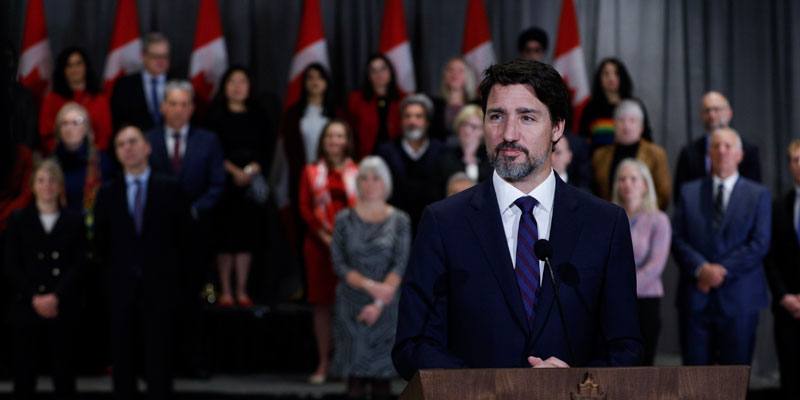Trudeau’s pre-recession period marked by weak economic numbers

Back in 2015, the Trudeau Liberals ran on—and in some ways, were elected on—a promise that their dramatic changes in fiscal and regulatory policies including higher government spending financed by borrowing and higher taxes and a more interventionist approach to regulating the economy would result in a stronger, more prosperous country. As noted in our new study, however, there’s now sufficient evidence that not only did Canada’s economy not improve but indeed our economic performance during the 2016 to 2019 period (prior to the COVID recession) is the weakest of the last five comparable periods.
Specifically, the 2016-2019 period contained the weakest performance for income growth, labour markets and business investment than the four previous comparable periods before recessions, namely 1986-1989, 1997-2000 2005-2008 and 2011-2014.
When we compare the average growth in per-person GDP, one of the broadest measures of income, over the last five pre-recessionary periods, growth was clearly weakest during the 2016-2019 period, growing by just 0.8 per cent annually (on average). Of the last five pre-recessionary periods, the 1997-2000 period (when Chrétien was prime minister) experienced the strongest average growth (3.7 per cent), which is 4.8 times higher the 2016-2019 period.
The next lowest average rate of growth in per-person GDP (1.2 per cent per year) was during the 2005-2008 period—that’s 50.0 per cent higher than the average growth rate during the 2016-2019 period.
The one economic bright spot for Trudeau’s 2016-2019 period was the unemployment rate, which averaged 6.2 per cent, the lowest of the five pre-recessionary periods. However, the labour force participation rate was falling during this time, largely due to our aging population. This means that the share of people over the age of 15 that were active in the labour force was declining. Put simply, due to the falling rate of participation, less job creation produces comparatively lower unemployment because there are less workers (as a share of the population) working or looking for work.
This explains why the 2016-2019 period had the lowest unemployment rate of the last five pre-recessionary periods but the second-weakest average growth in private-sector employment—just 1.5 per cent per year compared to 3.3 per cent per year during the 1986-1989 period. Think of it this way. If the 2016-2019 period had the same average labour force participation rate as the 2005-2008 period, the unemployment rate would have been 8.5 per cent instead of 6.2 per cent, which is the highest average unemployment rate of the five periods.
Turning now to business investment, which economists generally agree remains the foundation for sustainable employment and prosperity more generally. The broadest measure of business investment includes residential and non-residential structures (e.g. factories and commercial space), machinery and equipment, and intellectual property. Among the periods noted above, the highest average annual rate of growth (8.1 per cent) is recorded during the 1986-1989 period. On average, total business investment actually declined by 0.2 per cent during the 2016-2019 period, the worst performance among the periods analyzed.
And it’s important to recognize that the decline in business investment, broadly measured, extends well beyond the energy sector. Indeed, an analysis in 2019 of business investment in Canada between 2014 and 2017 found that roughly two-thirds of Canada’s 15 main industries experienced declines in business investment.
Canada, like many industrialized countries, has experienced a boom in residential construction. So a narrower measure of business investment focuses solely on non-residential construction and machinery and equipment. Here, the highest rate of average growth is recorded during Chrétien’s 1997-2000 period (9.3 per cent) while the lowest is again experienced during Trudeau’s 2016-2019 period, with business investment declining by 1.5 percent per year (on average).
While analysts must consider a number of factors when comparing economic performance, particularly with respect to factors within the control of government (i.e. policy) and those beyond the control of government, it’s fairly clear from the data that the economic performance of Canada was weakest during the 2016-2019 period compared to previous pre-recession periods.
The promise of better economic performance based on more government spending, higher taxes, more debt and more regulations simply did not materialize during the 2016-2019 period, which should give pause to policymakers and Canadians more generally as we contemplate the soon-to-be-released 2021 federal budget, which promises more of the same but on a grander scale.



